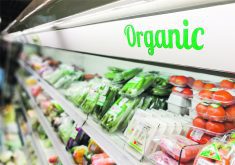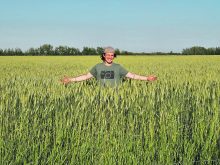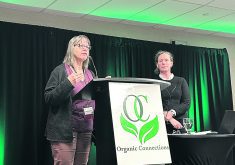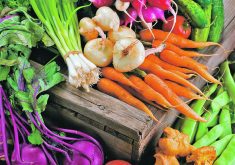The allure of high organic prices has become irresistible for some growers.
Industry representatives say 2015 was a fantastic year for Canada’s organic grain sector with the number of new producers jumping substantially.
“I’ve done more inspections for new, transitioning growers in 2015 than I (have) in many years beforehand,” said Stuart McMillan, an organic inspector in Manitoba.
“It is existing, conventional farmers (moving to organic).”
Canada’s organic industry doesn’t have hard numbers to support McMillan’s observations because organic statistics are often unreliable or two years out of date.
Read Also

Farming Smarter receives financial boost from Alberta government for potato research
Farming Smarter near Lethbridge got a boost to its research equipment, thanks to the Alberta government’s increase in funding for research associations.
However, other people in the industry have witnessed a similar trend.
“It’s probably somewhere between a 20 and 30 percent increase in the number of people telling us that they’re in transition (since January 2015),” Laura Telford, an organic business development specialist with Manitoba Agriculture, told an organic workshop held during Manitoba Ag Days in Brandon Jan. 21.
An increase in the number of producers represents a turnaround for Canada’s organic sector, which lost hundreds of producers from 2009-12.
“We think it’s between 20 and 40 percent of organic producers (on the Prairies) left in the three years of the recession,” Telford said last year.
In 2014, industry leaders developed a strategy to win back the dropouts and attract new entrants: promote the profitability of organics.
Organic grains and oilseeds have been double or triple the price of conventional grains over the last few years, thanks to robust demand in North America.
According to Alberta Agriculture, organic grain prices in December were:
• Brown flax: $38 per bushel (364 percent higher than conventional)
• Oats: $7 per bu. (246 percent higher)
• Milling wheat: $20 per bu.
The high prices are having an effect, and many have decided that organic is worth the effort.
“I would characterize them (people transitioning to organic) as conventional farmers who have crunched the numbers,” McMillan said.
“If you look at the numbers, even marginal cropland can make (for) a very positive bottom line.”
The meeting room for the Brandon workshop was packed, another sign that conventional producers are considering the three-year transition to organics.
“I think economics is the driver, but it’s not the only one,” Telford said.
“There are lots of (producers) in Manitoba experimenting with lower input costs and cover crops.”
Organic numbers on the Prairies
Canada had 3,513 organic farmers in 2013.
On the Prairies:
Alta. 279
Sask. 764
Man. 124
Anecdotal evidence suggests there has been an increase since 2013, but organic data is typically two years out of date.
Source: 2015 World of Organic Agriculture
Contact robert.arnason@producer.com


















